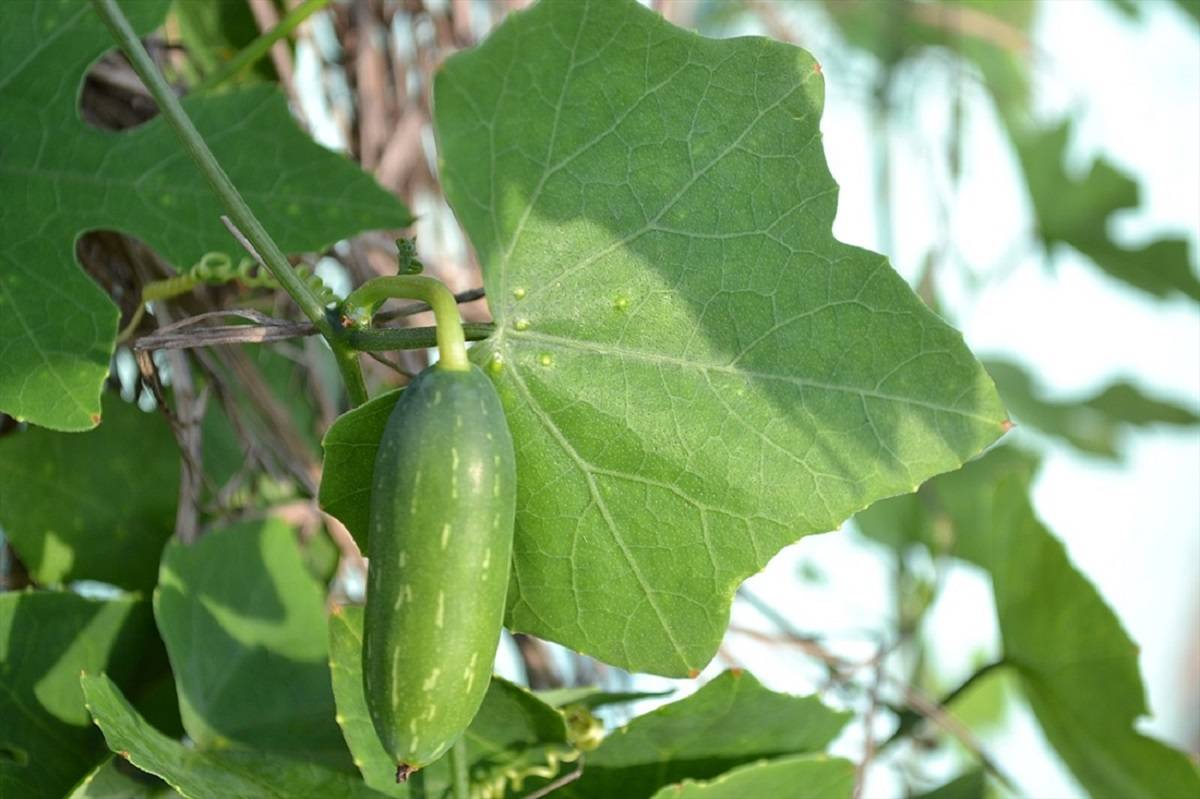
Ivy gourds are related to cucumbers and have fruit that tastes like cucumbers. The fruits are only different due to their size they are far smaller than cucumbers, being just approximately two inches long. It is indigenous to the Indian subcontinent and is often produced as a vegetable in South-East Asia, South Asia, and Africa's subtropical and tropical climates.
Classification
Scientific name: Coccinia grandis
Family: Cucurbitaceae
Common names in India: Ivy Gourd/ Tindora / Tondli (Hindi), Dondakaya (Telugu), Kovaikkai (Tamil), Kovaykka (Malayalam, Tondekai (Kannada), Tendli (Marathi), Tendle (Konkani), Kundru (Oriya), and Telakucha (Bengali).
How to Grow Ivy gourd?
Let’s have a look at how to grow, plant and care for Ivy Gourds.
Climatic Requirements:
For optimal growing and high-quality, ivy gourd plants need evenly distributed rainfall and a high humidity level. The anthesis of male and female flowers as well as anther dehiscence are highly associated with relative humidity, one of the climatological parameters.
Its cultivation is possible when the annual rainfall is between 150 and 250 cm and the usual temperature is between 25 and 35 °C. This crop is extremely vulnerable to frost and cold temperatures since the plant's vegetative portions are harmed by temperatures below 15°C.
Soil
Due to the perennial nature of ivy gourds, which stay active in the field for 3–4 years straight for regular bearing, sandy loam or loam soil rich in organic matter is suggested to provide a good yield. Since very acidic and sodic circumstances are shown to be damaging to plant health, soil pH between 5.8 to 6.8 is preferable for its growth and development.
The soil should be at least 8 cm deep and well-drained. Water logging is a risk to the crop. In May and June, field preparation begins with 2-3 deep ploughing.
After ploughing, the field should be kept open for a few days to allow the intense heat to kill weeds, insects, and diseases. Deep summer ploughing must be followed by 2-3 harrows or cultivators followed by planking to give a good tilth to the soil.
Seedling Density, Spacing and Seedling Rate:
Since ivy gourds are perennial and dioecious (male and female flowers grow on different plants), growing male and female plants in a ratio of 1:9 is crucial for improved pollination and increased output. It is true that only during the blooming and fruiting stages in the field can male and female plants are distinguished.
It is propagated through cuttings from a semi-hard vine. To plant one hectare of land, around 2500–3000 well-rooted, sprouted cuttings are needed. With the arrival of the monsoon, planting is done in 3 m-diameter trenches that are 30 cm x 30 cm x 30 cm deep.
Transplanting Time:
It is best to plant during the warm months of February and March and June through July.
Water Requirement:
Watering often is necessary since ivy gourds prefer damp soil over dry dirt. Keep the soil equally wet when it's hot or windy or while the plant is young.
Fertilizer:
When planting, mixing a lot of compost or well rotten manure will supply necessary nutrients. Additionally, the need for extra fertilizer can be eliminated by side-dressing the plant with compost once or twice a year.
Diseases and Pests
The ivy gourd is often a resilient climbing vegetable that is unaffected by any harmful pests or illnesses. The likes of aphids, mites, thrips, and whiteflies are frequent garden pests that should be closely watched. If the infestation is bad enough, you can try some natural therapies or utilize insecticides.
Wedding Operations:
The invasive vine known as weeding ivy gourd can produce new plants when its branches touch the ground. When seeds fall to the ground, they can germinate quickly. Keep a watch on it to prevent this problem; remove any fallen fruit, gather any pruned stems, and prevent the branches from getting too close to the ground. You can also grow it in containers as an alternative.
Harvesting and Yield:
Ivy gourds begin blooming and fruiting 10 to 12 weeks after planting, and fruiting lasts for a longer period (nearly 8-10 months). Although fruiting typically begins in February and lasts until November, the best yields are often achieved between July and November. Fruit output during this time is lower when winters are relatively harsh.
The entire year is the fruiting season in South and Central India. Fruits that are 5 cm long or oval are typically selected on the market. Typically, two to three pickings can be completed in a week to obtain sensitive fruit of the highest caliber. The transition from dark to bright or light green indicates the stage of harvesting. Care should be exercised during harvesting to ensure that minimum injury is caused to the vines.











